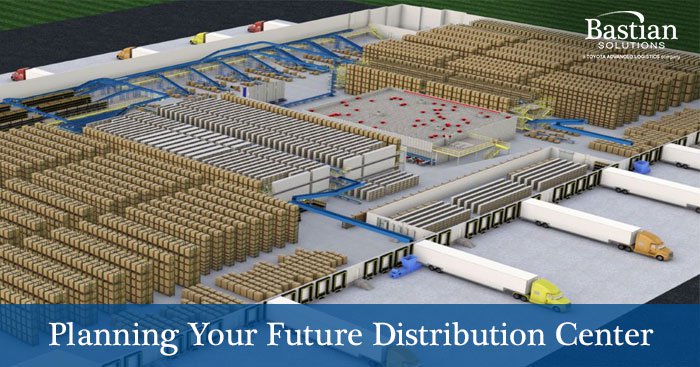
Planning Your Future DC
Wayne Lewis | 14 January 2020
The world of supply chain and distribution is evolving at a rapid pace. Amazon has changed the game, forcing businesses to rethink their distribution strategies. In order to compete, both now and in the future, companies are re-evaluating their operations and considering distribution center (DC) expansions, retrofits, and the development of new distribution centers. Developing a robust plan for the DC of the future is critical for mitigating risk and ensuring success.
Collect and Analyze Data
One of the first steps in developing a distribution center plan is to collect and analyze data. Data ensures objectivity and that the plan is based on a solid foundation. Data should be collected from several sources including historical transactions, operational audits, growth forecasts, and strategic plans. By collecting data from the vantage point of the past (historical transactions), the present (operational audits), and the future (strategic plans and growth forecasts), you can develop a holistic view of your DC requirements.
Historical data helps describe the behaviors of your business; e.g., “what” an order looks like in terms of size and frequency. Inbound and outbound transactional data provides critical throughput information that helps depict the scale, complexity and seasonality of your distribution operations. Historical inventory data can provide insight into stocking levels and storage needs.
Operational audits are another important source of data that should be leveraged in the planning process. By walking through your current DCs, you can identify issues and potential root causes of inefficiencies. Interviews with operators and key personnel can also provide valuable insight into problems and how they can be solved moving forward.
Forecast data needs to be collected from key stakeholders so that the throughput, space and customer requirements of the DC can be incorporated into the future state design parameters. Key forecast drivers on the DC are volume growth, the number of SKUs projected, and expected inventory turns. Typical planning horizons range from three to 10 years. Strategies and initiatives should also be taken into account so that other factors such as changes in distribution channels, order profiles, product mix and service requirements can be incorporated into the plan.
Establish Future State Requirements
Planning involves projecting the needs of the business over time. Once all the data has been collected, analyzed and validated, it can be transformed into a comprehensive set of future state requirements. This is the heart of the planning process - establishing the throughput and space needs for the business over the design horizon.
Facility requirements should define both the average and peak volumes to be processed in every functional area of the DC (receiving, storage, picking, value added services, packing, shipping). The quantification of requirements for each functional area in the DC is critical for evaluating the trade-offs in space, equipment, systems and labor of various alternatives.
Evaluate Alternatives
The first step in evaluating alternatives is to establish a baseline. Typically, the baseline is an extension of current state operations, may be heavily dependent on labor and requires the minimal amount of capital investment to meet the requirements. The capital investment and annual costs of labor, space, equipment, systems, etc. over the planning period must be developed for the baseline as well as each alternative.
Once the cash flows have been developed for all alternatives, the solutions can be compared financially to determine which option offers the best return on investment. The justification of higher levels of capital investment should focus on evaluating the incremental cost differences of the alternatives as compared to the baseline. Typical approaches for analyzing the merit of a recommended investment include simple payback, internal rate of return and net present value.
In addition to the financial evaluation, qualitative factors such as risk, capacity, labor availability, training, implementation schedule, scalability, and flexibility of each alternative should be considered. Sensitivity analysis around key drivers can also be performed to help refine the recommendation. Once a preferred option is identified, you’re ready to get the project approved and execute the plan.
Conclusion
Planning for the DC of the future can be a daunting task. But with thorough analysis, a disciplined methodology, and the involvement of key stakeholders, a well thought-out plan that meets the needs of the business with minimum risk and maximum value can be developed.
Wayne Lewis is a Senior Manager in Bastian Solution’s Consulting group. He has over 30 years of experience in leading consulting projects and overseeing distribution operations. Wayne has worked with hundreds of companies, helping them to optimize their supply chains, re-design their fulfillment centers or plan new facilities. Industry experience includes retail, e-commerce, consumer products, food, parts distribution, healthcare as well as many other verticals.
Comments
No comments have been posted to this Blog Post
Leave a Reply
Your email address will not be published.
Comment
Thank you for your comment.